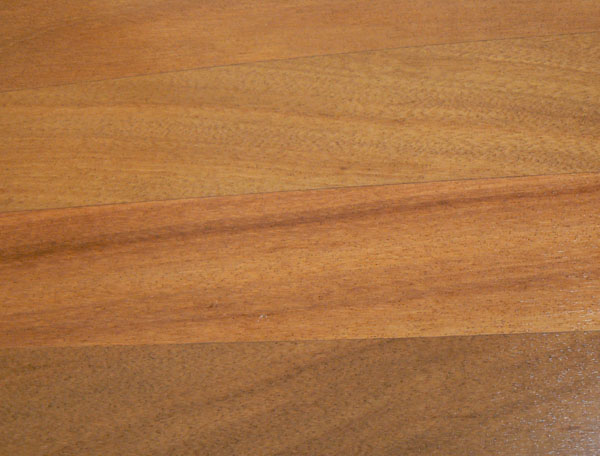The Tree: Santos Mahogany is a large and beautiful tree with a straight smooth trunk containing a resin which changes from citron to dark brown. The Santos tree grows up to 35 meters in height and becomes fertile after five or six years, and continues to yield for thirty years. The tree produces a flower has a fragrance which can be smelt a hundred yards away.
Principal Uses: Santos Mahogany is used in a variety of products including: Flooring, Furniture , Interior trim, Turnery, Railroad ties, Building materials, Chairs, Chests, Concealed parts of Furniture, Crossties, Desks, Dining-room furniture, Domestic flooring, Dowell pins, Dowells, Drawer sides, flooring, Fine furniture, Floor lamps, Furniture components, Furniture squares or stock, Hatracks, Interior construction, Kitchen cabinets, Living-room suites, Millwork, Moldings, Office furniture, Parquet flooring, Radio, stereo and TV cabinets, Rustic furniture, Stools, Sub-flooring, Tables , Trimming, Utility furniture, Veneer, Wainscotting, and Wardrobes
Appearance: The sapwood of cabreuva is pale brown while the heartwood is purplish-red in color. The species has an interlocked grain and possesses a medium grade texture.
Properties: Santos mahogany is durable and resists attacks by fungus and insects. The wood remains smooth under friction. Cabreuva can take some time to dry properly but does have good stability characteristics once dry.
Other Interesting Information: There are two regions that Santos Mahogany come from. Cabreuva (from Brazil) is the true Santos Mahogany. Peru also produces Santos Mahogany but it is listed in the lumber markets as Peruvian Santos. The Cabreuva is predominantly a red maroon color with a strong pungent odor. Peruvian Santos is more of a yellow brown color and may or may not have a strong odor. We have on occasion had the Peruvian in our plant but it is not as readily available in lumber because few companies can sell it in anything except pre-made flooring which is shipped state side straight from Peru already milled into flooring. Peruvian Santos is favored by a lot of high volume flooring distributors / manufacturers such as BR111, Lumber Liquidators, Mirage, and Bruce because it is much cheaper and more readily available than the Cabreuva. Most of the time, the stock we have on hand is Cabreuva. Peruvian Santos favors a purple color rather than a red or brown tone found in Cabreuva.
Quick Fact: Santos trees are tapped like rubber trees to collect their resin like gums that are used commercially and sold as "balsam.". A tree must be at least 20 years old before it can be tapped for its gum, and one tree produces only about 3 kg of gum annually. Today, El Salvador is the main exporter of balsam of Peru (exporting approximately 50 metric tons annually), and Colombia and Venezuela are the main producers of balsam of tolu. The gum has a vanilla-like smell and taste and is used as a food additive and flavoring in cough syrups, soft drinks, confectioneries, and chewing gums. This is used as a stimulant, diuretic, anthelmintic and external application to gangrenous ulcers and to remove freckles.
The indigenous tribes of Mexico and Central America use the leaves and fruit for asthma, colds and flu, rheumatism, and external wounds. The Choco Indians use the powdered bark as an underarm deodorant. The sap of M. balsamum has documented indigenous uses for colds and lung ailments, and Amazon rainforest tribes have employed it for abscesses, asthma, bronchitis, catarrh, headache, rheumatism, sores, sprains, tuberculosis, venereal diseases, and wounds.










Log In